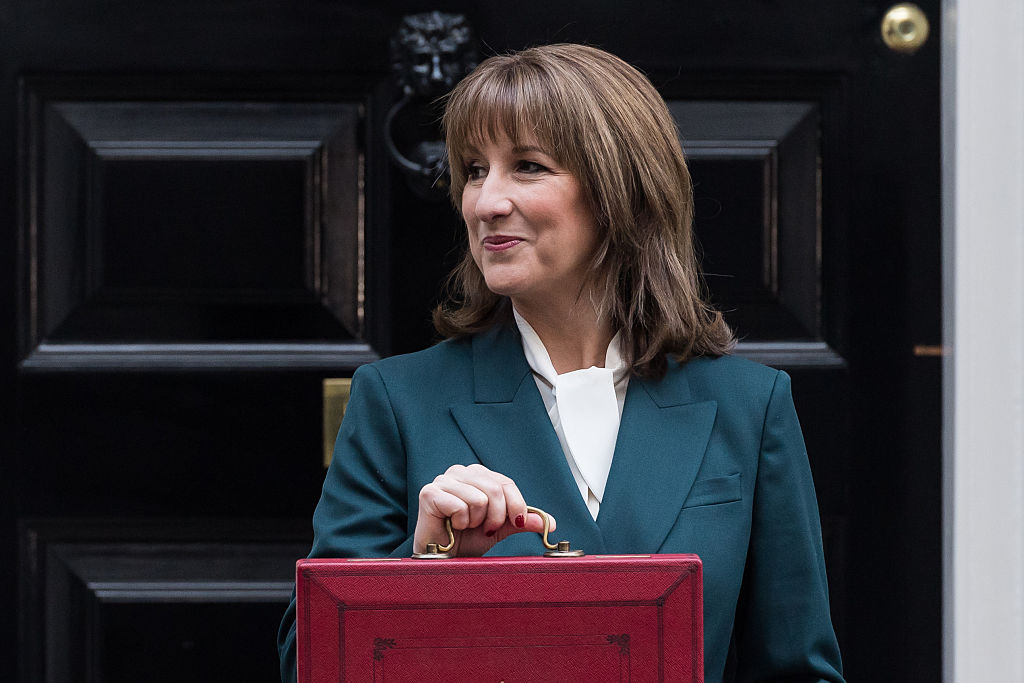Highest value stocks and shares ISAs worth 17 times more than cash
Ahead of potential ISA reforms in the Budget, new FOI data highlights the significant gap between saving and investing your yearly tax-free allowance


The average value of the UK’s biggest stocks and shares ISA pots are worth 17 times more than their cash equivalents, new figures show, as the Treasury reportedly mulls ways to get ordinary Brits investing more.
All ISAs allow savers to put away up to £20,000 a year, in either cash or shares or both, to grow free of any income tax, dividend tax or capital gains tax. But there are stark differences between cash ISAs and stocks and shares ISAs in how much they grow.
Of the top 25 highest value cash ISAs, the average is worth £640,000, according to data from HMRC obtained in a Freedom of Information request by investment firm InvestEngine.
MoneyWeek
Subscribe to MoneyWeek today and get your first six magazine issues absolutely FREE

Sign up to Money Morning
Don't miss the latest investment and personal finances news, market analysis, plus money-saving tips with our free twice-daily newsletter
Don't miss the latest investment and personal finances news, market analysis, plus money-saving tips with our free twice-daily newsletter
By contrast, the average value of the top 25 highest value stocks and shares ISAs is £10,980,000 – more than 17 times higher.
It means there is a more than £10 million difference between the average across the highest value cash and stocks and shares accounts.
Even when looking at smaller amounts, stocks and shares accounts have pulled ahead dramatically in the value stakes.
Only 30 cash ISAs have over £500,000 in them, compared to 38,680 stocks and shares ISAs, the figures showed.
While 1,530 cash ISAs have over £250,000 in them, for stocks and shares it’s 244,570.
Andrew Prosser, head of investments at InvestEngine said the numbers underline how investing is clearly the most effective way to grow your long-term wealth and to potentially become an ISA millionaire.
“While cash ISAs will always have an important role, especially for shorter-term financial needs, the figures set out clearly the value of long-term investing, with the highest-value stocks and shares ISAs now worth 17 times that of the top cash ISAs on average,” he said.
We compare cash ISAs vs stocks and shares ISAs in a separate article
Cash ISA reform
The gap between the potential returns on offer from stocks and share ISAs vs cash ISAs has also caught the attention of the Treasury, with chancellor Rachel Reeves trying to turn the British public from a nation of savers into investors.
Reeves reportedly has her sights on ISA reform as the way to do it – potentially with a cut to the cash ISA limit from to as low as £4,000 – with an announcement expected in the upcoming Budget on 26 November.
The chancellor told broadcasters in February: “It’s really important that we support people to save to achieve their aspirations. At the moment, there is a £20,000 limit on what you can put into either cash or equities (ISAs) but we want to get that balance right.
“I do want to create more of a culture in the UK of retail investing like what you have in the United States, to earn better returns for savers.”
There was around £360 billion saved in cash ISAs as of the 2023/24 tax year. Cash ISAs accounted for about 66% of all ISA subscriptions in that period. Only around 3.6 million people hold both investment and cash accounts. Just 4.2 million use ISAs solely to invest.
Cash ISA savers’ ‘won’t switch’
However cash ISA savers have shown a reluctance to want to switch from the safety of cash ISAs.
Research polling 1,400 cash ISA savers – four fifths of whom were aged 65 or over – by Paragon Bank found the majority would not invest in stocks and shares in light of a cut to cash limits. They would switch to regular savings accounts instead, potentially driving up their income tax bill.
MoneyWeek spoke to one reader who said, after losing £5,000 playing the stock market, cutting the cash limit on ISAs still wouldn’t make him invest.
But the government is hoping its Leeds Reforms can help tip the balance. Banks will soon start sending investment opportunities to savers with cash sitting in low-interest accounts for the first time. There will also be a nationwide advertising campaign to highlight the opportunities of investing for people who are able to do so.
Under current trends, moving £2,000 from these low-interest accounts to stocks and shares could make millions of people more than £9,000 better off in 20 years’ time, by the government's reckoning.
Saving vs investing
The numbers are on the chancellor’s side – if she can convince a sceptical British public.
As the Budget, and with it, potential ISA reform, approaches, the data obtained via the FOI reveals a clear and growing divide between saving and investing, Prosser said.
“The difference reflects how consistent investing has proven to be the most effective route to building meaningful, long-term wealth,” he added.
“As the chancellor looks set to adjust ISA rules to encourage more people to invest, it’s these kinds of numbers that truly help demonstrate the potential that investing holds.”
Alongside ISA reform, measures to improve financial education and increase its accessibility should also feature in the Budget,” Prosser said.
“This approach has far greater potential to drive participation in investing than simply placing restrictions on savings and ultimately foster a better investment culture in the UK.”
Get the latest financial news, insights and expert analysis from our award-winning MoneyWeek team, to help you understand what really matters when it comes to your finances.
Laura Miller is an experienced financial and business journalist. Formerly on staff at the Daily Telegraph, her freelance work now appears in the money pages of all the national newspapers. She endeavours to make money issues easy to understand for everyone, and to do justice to the people who regularly trust her to tell their stories. She lives by the sea in Aberystwyth. You can find her tweeting @thatlaurawrites
-
 London claims victory in the Brexit wars
London claims victory in the Brexit warsOpinion JPMorgan Chase's decision to build a new headquarters in London is a huge vote of confidence and a sign that the City will remain Europe's key financial hub
-
 Rachel Reeves's Autumn Budget: What it means for the UK
Rachel Reeves's Autumn Budget: What it means for the UKOpinion A directionless and floundering government has ducked the hard choices at the Autumn Budget, says Simon Wilson
